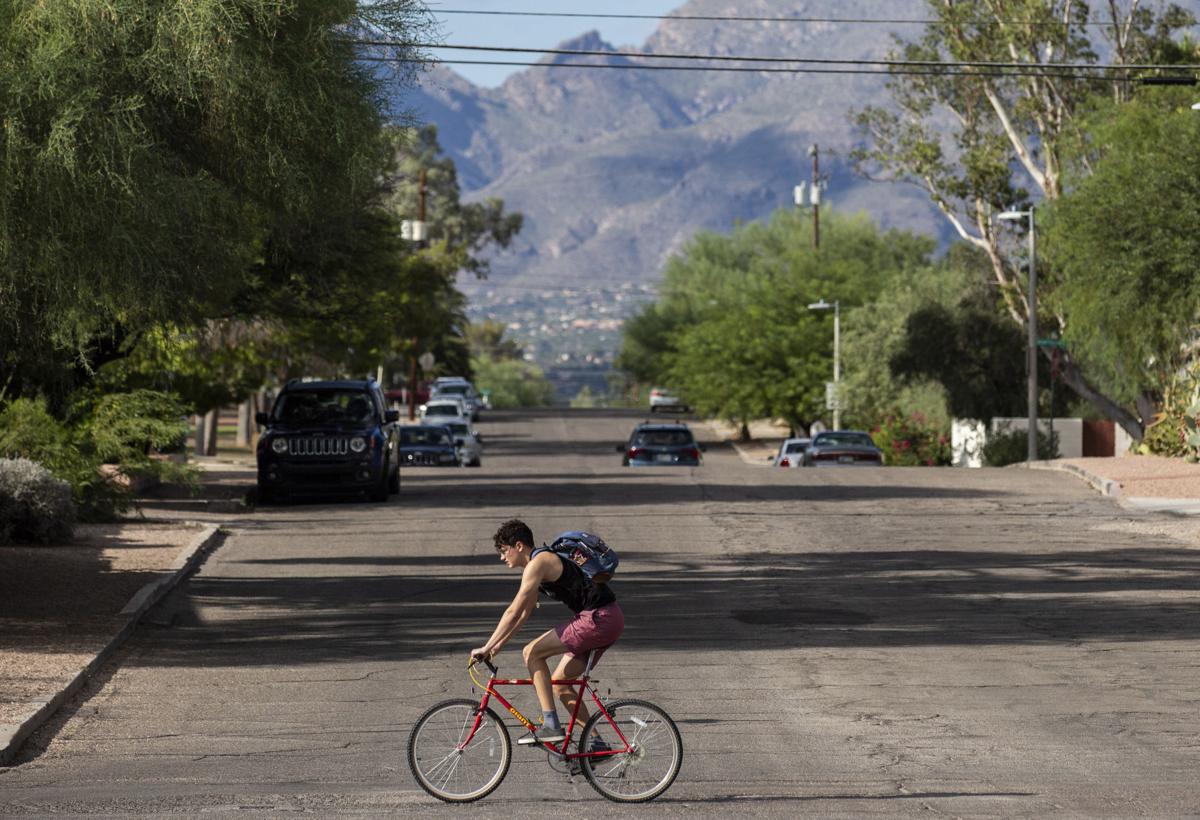The Tucson Department of Transportation and Mobility recently received praise from one of the nation’s bicycling advocacy groups for its work on behalf of cyclists.
People for Bikes, which is based in Boulder, Colorado, revealed its rankings, with Tucson at No. 13 out of more than 550 cities and towns measured for its third annual list. Tucson ranked No. 35 in 2019.
The organization measures each location with five categories: ridership, or how many people are riding bikes; safety; network, or how easy is it for people to bike to get around; reach, or how the network serves all of the community; and acceleration, or how fast the community is working to improve biking.
Andrew Bemis, Tucson’s bicycle and pedestrian program coordinator, said the recognition is a reflection of the city’s past and future plans.
“Tucson has made great strides over the past several decades in making a great city for biking,” said Bemis. “That said, we also have a long way to go.”
People for Bikes highlighted the acceleration, ridership and safety categories for Tucson for 2020.
“I think on the positive side, we, unlike a lot of other major cities, have pretty good coverage,” Bemis said. “I think over 90% of our major street network has a bike lane on it, and that’s good but it’s not enough.
“We know that a bike lane on a major street doesn’t appeal to a lot of people who’d like to ride. It doesn’t feel like a safe experience for them. Right now we’re really trying to focus on building what we would call low-stress bicycle facilities.”
Looking for A low-stress ride
The Parks and Connections Bond of 2018, known as Proposition 407, is one of the key components to creating low-stress rides for bike riders throughout Tucson, according to Bemis.
A portion of the $225 million bond package helped address over 3 miles of protected or widened bike lanes in 2019 and 5 miles of bike boulevards, a low-stress biking network using calmer residential streets as alternatives to major thoroughfares.
This year, riders can expect more than 20 miles of bike boulevards and another 3 miles of protected bike lanes to be completed, Bemis said.
Some of the bike boulevards the department has in mind are along Carondelet Drive/Fifth Street between Pantano River Park to Houghton Road connecting two parks, eight schools and a library, as well as Limberlost Drive between Flowing Wells and Oracle roads as a connection for Flowing Wells High School students.
The department is also looking to install more High Intensity Activated Crosswalks, a traffic signal between intersections that stops traffic so bike riders and pedestrians can cross.
The department is being guided by its “Complete Streets” policy, adopted in February 2019, as an approach to ensuring an equitable transportation network for everyone. Volunteers with the Complete Streets Coordinating Council assess the department to make sure its projects meet policy guidelines.
“We know, unfortunately, too many people are involved in collisions every year on bicycles and motor vehicles. So building up a low-stress bike network will hopefully have a big impact,” Bemis said.
In February, transportation officials launched the “Move Tucson” program to create a transportation and mobility master plan for the next 20 years.
A big part of the initiative is giving Tucsonans a voice on what the city will look like. An interactive map allows residents to leave ideas and comments on what kind of improvement they’d like to see.
“We’re still seeing a lot of demand for low-stress bike infrastructure. People want to see more protected bike lanes, so they feel safe riding on major streets,” Bemis said. “They want to see more safe crossings, those bike HAWKS to get across our major streets. They want to see more residential bike routes and slow streets in the neighborhood areas that are safe for biking.”
Residents are also calling for more off-street routes, like the 131-mile-long Chuck Huckelberry Loop around the Tucson area. Residents can expect at least one such route along the El Paso and Southwestern Greenway between University Boulevard and Main Avenue to Kino Sports Complex — connecting 26 parks, 10 schools and two libraries.
“Moving forward, I think the city is really focused through the Move Tucson effort in identifying projects from a Complete Streets lens — meaning we create a balanced transportation system and identify projects where people can safely, comfortably and conveniently get around in many modes, not just through driving,” Bemis said.





